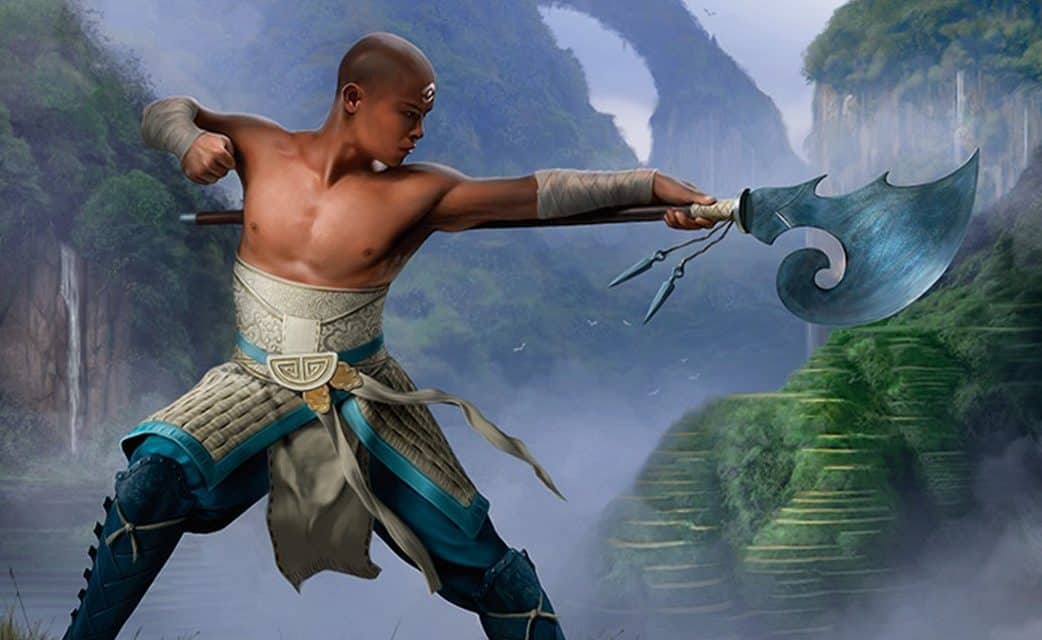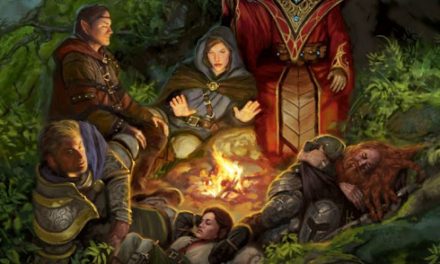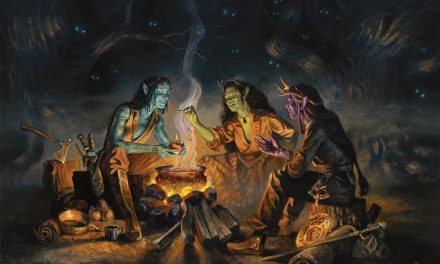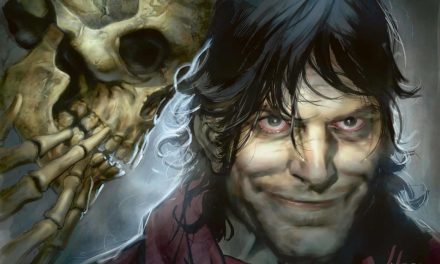Monks in D&D may be known for the lethality of their unarmed attacks, but that doesn’t mean they’re restricted to being unarmed!
Some Monks have been trained in the use of certain weapons in addition to their unarmed martial arts training.
Using Monk Weapons is a great way to add more theme and spectacle to your Monk character.
However, this can sometimes get a little confusing…
So today we’re taking a closer look at Monk Weapons in D&D 5e. We’ll look at what they are and how you might reskin existing weapons in the game to match real-life Monk Weapons.
What Are Monk Weapons in D&D 5e?
As part of their Martial Arts training, Monks will commonly practice with weapons just as much as they train without them.
These weapons are typically very simple with a focus on practicality. The quarterstaff is likely the most well-known Monk weapon and is a great example of this.
Shortswords and simple weapons can all be considered Monk weapons in D&D 5e.
To qualify as a Monk weapon, a weapon must meet the following criteria:
- Be a simple weapon (i.e. not martial)
- Is not a two-handed weapon
- Is not considered a heavy weapon
So a Greatclub, for example, could not qualify despite being a simple weapon because it is two-handed. Likewise, a flail would not qualify as a Monk Weapon because it is a Martial Weapon.
Shortswords are martial weapons but are specifically mentioned as being allowed to take as Monk Weapons by the Player’s Handbook.
A quarterstaff is “versatile” which means that it can be wielded as either one-handed or two-handed. Because it is not specifically two-handed, it qualifies as a Monk weapon.
These restrictions on Monk Weapons apply to all Monks except for the Way of the Kensei Monk which specializes in weapon combat.
Monk Weapons also gain certain benefits:
- Use Dexterity instead of Strength for the attack and damage rolls
- Benefit from Martial Arts Die (See the Calculating Damage section of this article.)
- Still allow you to make one extra unarmed attack as a bonus action with Martial Arts feature.
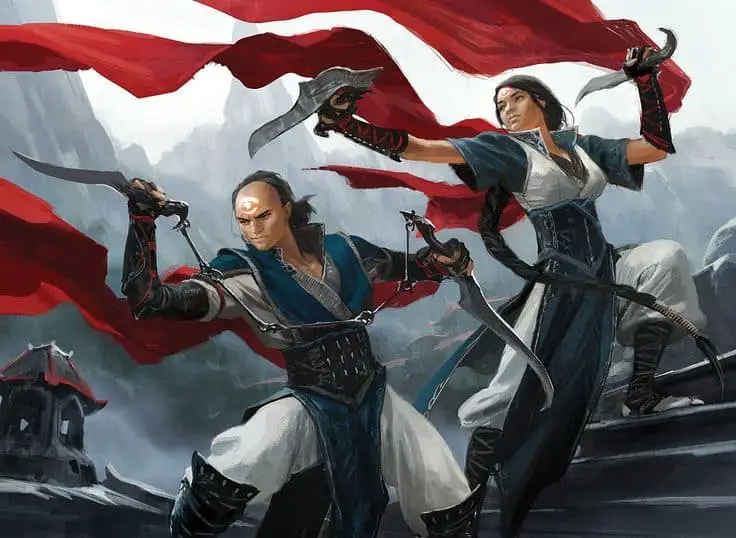
Reskinning Monk Weapons in 5e
There are plenty of famous weapons that Monks are associated with that aren’t presented in the official 5e books. In those cases, you’ll need to work with your DM to reskin existing weapons from the PHB.
Fortunately, it’s pretty simple in most cases.
Daggers can be reskinned to be weapons like sai, chakram, or kama. Meanwhile, you can reskin the basic club to include chain and be nunchaku or the quarterstaff to be a three-section staff!
You might also reskin the shortsword to instead be butterfly swords, bladed War Fans, or a kusari-gama.
These don’t necessarily change the mechanics of your character, but can help you achieve the look/feel that you’re going for.
A Monk beating the daylights out of enemies with nunchaku sounds a lot cooler than just smacking them with a club! Not to mention it’s more on-brand!
Also Check Out: The Full Monk Class Guide for D&D 5e!
Calculating Damage with Monk Weapons in 5e
This is the part where people tend to get confused when it comes to Monk Weapons in D&D 5e.
There are two values that you need to be aware of: your Martial Arts Die and your weapon’s damage die.
Your Martial Arts Die is based on your level. Naturally, your weapon’s damage die is found on the Weapons table of the Player’s Handbook.
| Monk Level | Martial Arts Die |
| 1 – 4 | 1d4 |
| 5 – 10 | 1d6 |
| 11 – 16 | 1d8 |
| 17+ | 1d10 |
Because of your Martial Arts training, you can roll your Martial Arts Die for an attack in place of the normal damage from an unarmed strike or your Monk Weapon.
Obviously, you’re going to want to go with whatever is higher.
So consider a shortsword. Up to level four, your Martial Arts die is 1d4 versus the shortsword’s damage of 1d6. Naturally, you’ll want to take the 1d6 from the shortsword instead of the 1d4.
(After all, when it comes to damage, every little bit helps!)
So, you could now swing with your shortsword and then spend a ki point to follow the attack with your Flurry of Blows. Just note that the attacks with your Flurry of Blows specifically have to be unarmed strikes.
Let’s say you’re level 4. If all three attacks hit, you’re rolling 1d6 for the shortsword plus 2d4 for the Flurry of Blows (based on your Martial Arts die) plus your Dexterity modifier for each attack.
So, yeah, it’s not a bad idea to still have a weapon at lower levels if you want to squeeze as much damage as possible out of your attacks.
It Goes Both Ways!
Keep in mind that this means your Martial Arts Die can also help otherwise weaker weapons deal some crazy damage!
For example, a level 18 Monk’s Martial Arts Die is 1d10.
Not only are their unarmed strikes going to hit for 1d10 each, but you’re able to use that die in place of the damage from a qualifying Monk Weapon as well.
So using nunchaku (a reskinned club) isn’t going to do a measly 1d4 damage. You’re still smacking enemies for 1d10 per hit!
Is there a mechanical benefit to this? Well… not really…
Does it look epic and open up all kinds of new ways to describe yourself in combat? ABSOLUTELY!
If knocking a dragon out with nunchaku isn’t on your bucket list, it should be now. Bruce Lee would be proud of you!
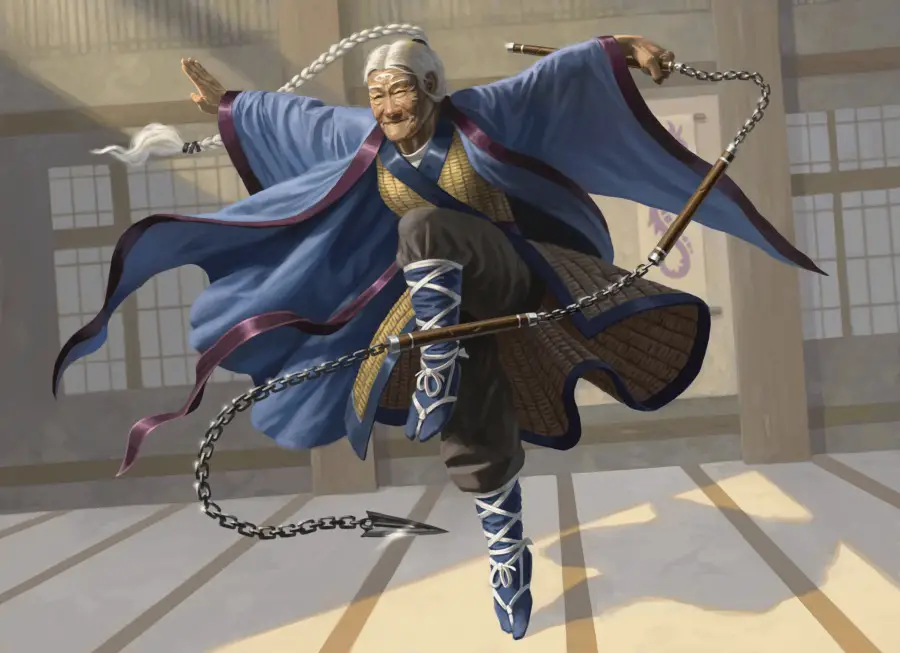
Ranged Monk Weapons?
Monks rely heavily on their mobility to close in on enemies. Unfortunately, this comes at the cost of not particularly being suited to using typical ranged weapons.
Generally speaking, your best bet for a ranged option that qualifies as a Monk Weapon would be something like a dagger or light hammer. These meet the requirements of Monk Weapons and are able to be thrown to deal damage based on your Martial Arts Die.
Funny enough, darts actually don’t qualify as Monk Weapons. This is because darts are simple RANGED weapons and not simple MELEE weapons.
I never actually noticed this until I was writing this article and had to fact-check myself! Because they’re part of the Monk’s starting kit, I thought this was a bit surprising!
You can see rules-boss Jeremy Crawford’s explanation of this here.
When it comes to ranged weapons for your Monk, you can widen your options by either taking the Kensei subclass at level 3 or by bringing in an optional class feature.
Recommended: Mastering the Monk’s Stunning Strike in D&D 5e
Dedicated Weapons – Optional Rule for 5e
Tasha’s Cauldron of Everything introduced several new Monk features. One of these new additions is the Dedicated Weapon feature.
This allows you to treat a specific weapon as a Monk Weapon. This weapon isn’t held to the same requirements as Monk Weapons, but it does have to meet certain other requirements to be used in this way.
Specifically:
- The weapon must be a simple or martial weapon.
- You must be proficient with the weapon.
- The weapon must not have the “heavy” or “special” properties.
In most cases, that second requirement is going to be the most important part to be aware of.
For example, you could use the Dedicated Weapon feature with a shortbow because it is a simple weapon with which you are proficient and doesn’t have the “heavy” or “special” properties.
However, you couldn’t do this with a longbow because it is a martial weapon that you do not have proficiency with. But even if your Monk gains proficiency with longbows, it still has the “heavy” property which means it still doesn’t qualify.
To use the Dedicated Weapon feature on a weapon, you focus your ki on a weapon after a short or long rest. The benefit lasts until you use this feature again.
Keep in mind that you are treating that specific weapon as a Monk weapon and not all weapons like it. If you use this on a dart, only that one dart will be a Monk Weapon for you. The next darts you throw will function as normal darts.
Conclusion – Monk Weapons in D&D 5e
It’s pretty rare (in my experience anyway) to see players taking advantage of what Monk Weapons have to offer. Whether mechanically or just thematically, there are plenty of benefits to working them into your character’s build!
Personally, I’m still kind of shocked about the fact that darts don’t count as Monk weapons. Sure, you might as well just use a dagger, but it just caught me so off-guard!
If that’s the case, I might just have my next Monk character focus on throwing hammers at enemies! Though I’m not sure if that’s a joke or not yet…
Anyhow…
I hope you’ve found this article helpful! If you still have any questions about Monk Weapons in D&D 5e or just want to share some awesome Monk stories, leave me a comment below!
Check out my full ranking of every Monk subclass in D&D 5e to see how each subclass stacks up against the others!
Want all the latest player guides, DM tips, news, reviews, and more for D&D 5e? Sign up for the Tabletop Joab newsletter below!
You can also follow me on Facebook and Twitter.
If you found this article helpful and want to support the site, you can buy me a coffee here! (It’s not expected, but very appreciated!)

